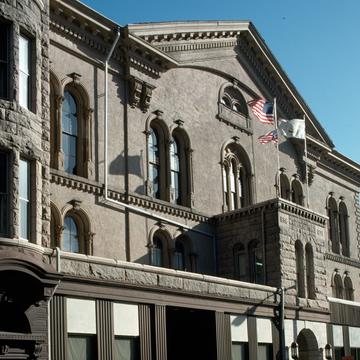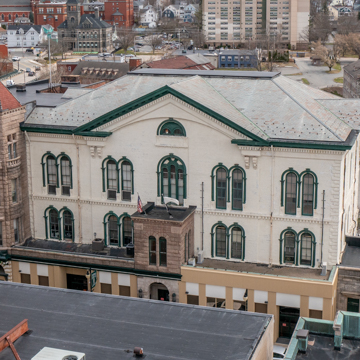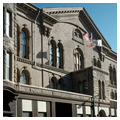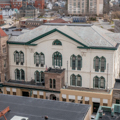You are here
Woonsocket City Hall (Harris Institute)
Above and behind its partial encasement by the Neo-Romanesque addition (built when this, the city's first large-scale civic building, officially became the city hall), can be seen the tall, paired, round-arched windows of the original facade of the Harris Institute. The obscured building was commissioned by the industrialist Edward Harris. In both design and function the institute combined the pragmatic economic attitudes of a good businessman with the philanthropy of industrial paternalism. Built to look as if it were of fashionable and expensive brownstone with stone trim, the high-style Venetian Renaissance–inspired facade is in fact of stuccolike mastic, while the columns and surrounds of the windows are cast iron. On its top floor the building housed an assembly hall with 1,100 seats that placed Woonsocket on the national lecture circuit. (Abraham Lincoln spoke here in 1860 during his presidential campaign.) The floor below contained a “Sunday school”—not a religious institution, but a free school for mill workers, where they could learn to read and write and otherwise improve themselves on their days off. Street-level stores generated income to help finance the social and civic programs of the building. Modern streetfront excrescences to accommodate the city's bureaucracy seriously deface a building which deserves a better fate, for both architectural and historical reasons.
Writing Credits
If SAH Archipedia has been useful to you, please consider supporting it.
SAH Archipedia tells the story of the United States through its buildings, landscapes, and cities. This freely available resource empowers the public with authoritative knowledge that deepens their understanding and appreciation of the built environment. But the Society of Architectural Historians, which created SAH Archipedia with University of Virginia Press, needs your support to maintain the high-caliber research, writing, photography, cartography, editing, design, and programming that make SAH Archipedia a trusted online resource available to all who value the history of place, heritage tourism, and learning.




